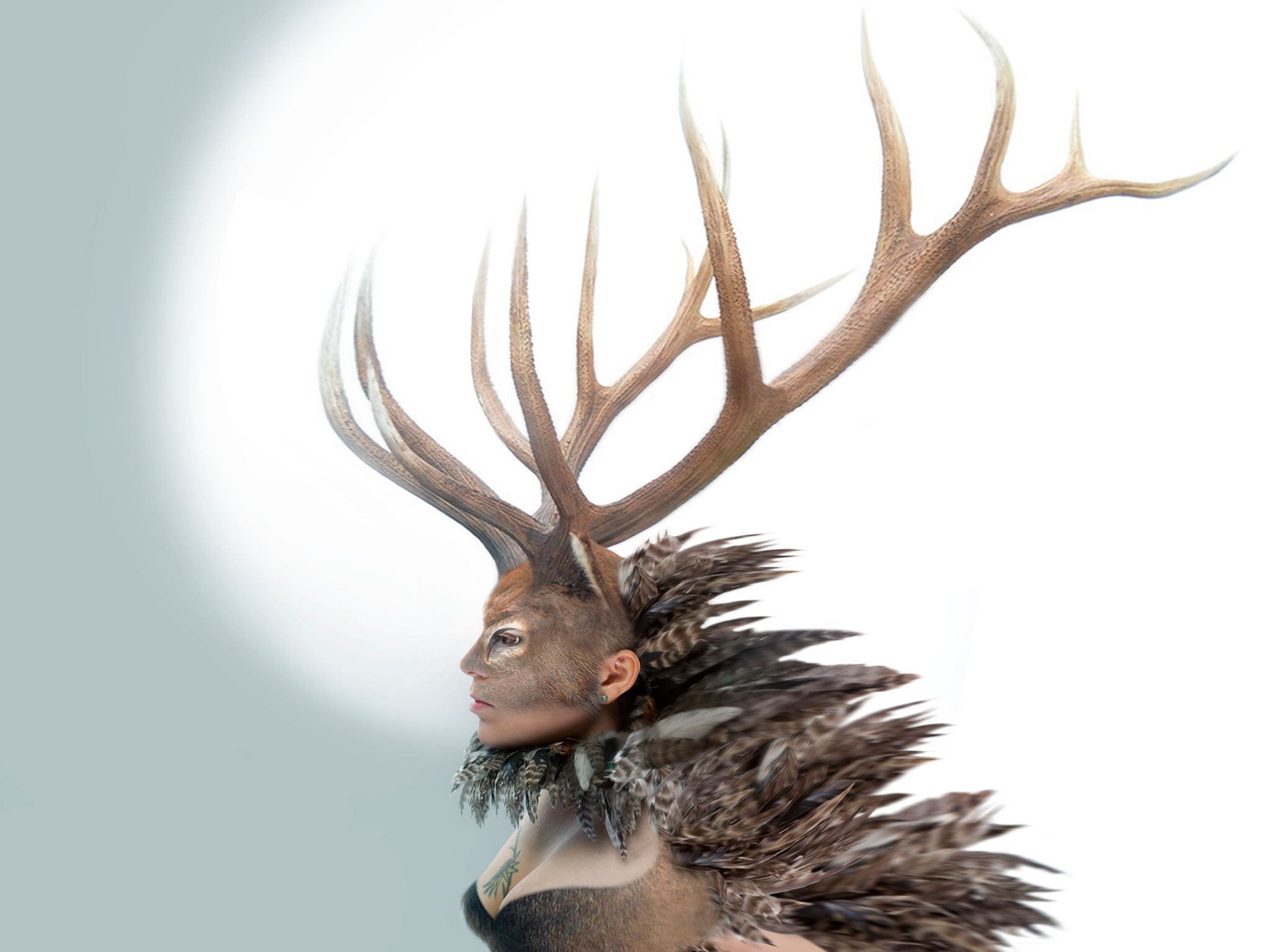Tanya Tagaq: The throat-singing, seal-wearing Inuit star of Canadian music
The esoteric musician won Canada's version of the Mercury Prize

Your support helps us to tell the story
From reproductive rights to climate change to Big Tech, The Independent is on the ground when the story is developing. Whether it's investigating the financials of Elon Musk's pro-Trump PAC or producing our latest documentary, 'The A Word', which shines a light on the American women fighting for reproductive rights, we know how important it is to parse out the facts from the messaging.
At such a critical moment in US history, we need reporters on the ground. Your donation allows us to keep sending journalists to speak to both sides of the story.
The Independent is trusted by Americans across the entire political spectrum. And unlike many other quality news outlets, we choose not to lock Americans out of our reporting and analysis with paywalls. We believe quality journalism should be available to everyone, paid for by those who can afford it.
Your support makes all the difference.Canada’s version of the Mercury Music Prize – the Polaris, established in 2006 – has yet to establish itself as a platform to reach international audiences: previous winners Arcade Fire and Feist were already well-known. But this state of affairs is set to change following its most recent, ground-breaking choice.
Its 2014 winner, Tanya Tagaq, proudly represents Canada’s indigenous, Arctic-dwelling Inuit. Finally, the chance has come for Canadian music fans to name an artist of indigenous extraction other than Buffy Sainte-Marie, the Cree singer/songwriter who came to fame in the Sixties through the Toronto and Greenwich Village folk scenes with such uncompromising ballads as “Universal Soldier”.

Previously known for collaborating with Björk, Tagaq has gradually built her own following. This gong adds extra impetus in the wake of success within the aboriginal category of Canada’s answer to the Grammys, the Juno awards. Tagaq’s achievement is impressive for several reasons, not least that she showcases an especially exotic musical form, throat singing. Having come to attention via Björk’s 2004 album Medulla and her touring with the Icelandic star, Tagaq has been combining her traditional vocals with an eclectic array of instrumentation, electronics and field recordings that frankly makes her guttural, often wordless delivery all the more other-worldly, though with hints at deep connections with the natural world.
Just as startling as her performance at the awards ceremony last September, one that had more parallels with experimental noise than world music, was an acceptance speech that gives some idea as to why mainstream Canadian society might prefer its Native American population to focus on carving totem poles or maintaining sweat lodges. Having topped a strong shortlist that included Arcade Fire and Drake, the Inuit performer used her place in the spotlight to have a crack at overbearing animal-rights activists with the stark message “Fuck Peta”.
Tagaq had been angered by bans on seal hunting in her native land, which although targeted at commercial operations rather than indigenous lifestyles, she saw as impinging on local livelihoods. “People should wear and eat seal as much as possible,” the artist said, holding out her seal-fur armbands. This outburst, major news in her homeland, overshadowed another, more subtle message. During her performance, the artist had the names of 1,200 missing or murdered indigenous women scroll behind her as she sang. In the past, the Nunavut-raised artist has complained about her own experiences of Canada’s residential schools’ strict regimes.
Her Polaris-winning album Animism is due for release here later this month, while a US reissue label, better known for soul obscurities and country oddities, has released the first in a series of compilations of folk and rock from indigenous North American artists. After years of marginalisation, Native American musicians past and present are beginning to enjoy wider exposure.
Light In The Attic’s Native North America (Vol I) shows that many artists from similar backgrounds to Saint-Marie and with similar sensibilities were striving to make a mark but were stymied by their own demons or a failure to be taken seriously. The Seattle-based crate-digging imprint is seeking to redress this imbalance with what promises to be an exhaustive set of anthologies that tell the story of Native American music from the Sixties onwards. The first instalment has been a 15-year labour of love for Canadian compiler and music producer Kevin Howes and naturally focuses on his homeland, with contributions from the coastal tribes of present-day British Columbia to Inuit rock outfits.
Yet while these artists are telling distinctive stories about their beliefs, culture and attachment to nature, they are just as inspired by Neil Young, Hank Williams or The Beatles. Some add acoustic guitar to traditional percussion and their indigenous tongues, while others inhabit familiar folk and rock idioms, most strikingly on protest songs about racist politics (“I Pity the Country”) or laments for fast-disappearing environments (“Call of the Moose”). Inspired by the youthful rebellion promised in those genres, indigenous musicians found their own voices, though they were rarely heard beyond their own communities.

Having lived in Toronto and Vancouver, Howes has uncovered some traumatic tales. Singer/songwriter Willie Thrasher was cut-off from his Inuit traditions for much of his childhood thanks to Canada’s since-reformed residential schools system: removed from his family, banned from speaking his native tongue and forced to adopt Western customs. Accordingly, he started out in straight rock’n’roll cover bands before being encouraged to explore his own identity. Meanwhile, Algonquin/Mohawk artist Willy Mitchell turned to music after being shot in the head by a policeman, the unwitting victim after a group of mates stole the lights from a Christmas tree. He wrote poetry in hospital and bought a guitar with his compensation money.
Most material from such artists appeared on struggling indie labels and was held back by limited pressings or local distribution (though we should pay thanks to the Canadian Broadcasting Company (CBC) for giving studio time to the fantastic Inuit jam band Sugluk). Others enjoyed more established careers: Willie Dunn is perhaps the name best known to Canadians thanks to his work as a film-maker and political activist, though his contributions to the anthology – “I Pity the Country” and “Son of the Sun” – stand on their own merits.
Alongside Tagaq’s success, the Junos’ 2014 breakthrough group of the year was eclectic dance trio A Tribe Called Red – all First Nations artists – incorporating pow wow music into hip-hop and dancehall, though refusing to allow their output to be classed as aboriginal. With some of the Native North America artists using renewed interest to focus on their careers, such communities are starting to feel optimistic they can be appreciated on their own terms without the suspicion they are being given broadcast time for tokenistic reasons. As Tagaq told CBC the day after her victory, “we can’t be pushed away anymore”.
Tanya Tagaq’s album ‘Animism’ is released on 26 January on Six Shooter Records. ‘Native North America (Vol I)’ is out now on Light in the Attic Records
Join our commenting forum
Join thought-provoking conversations, follow other Independent readers and see their replies
Comments